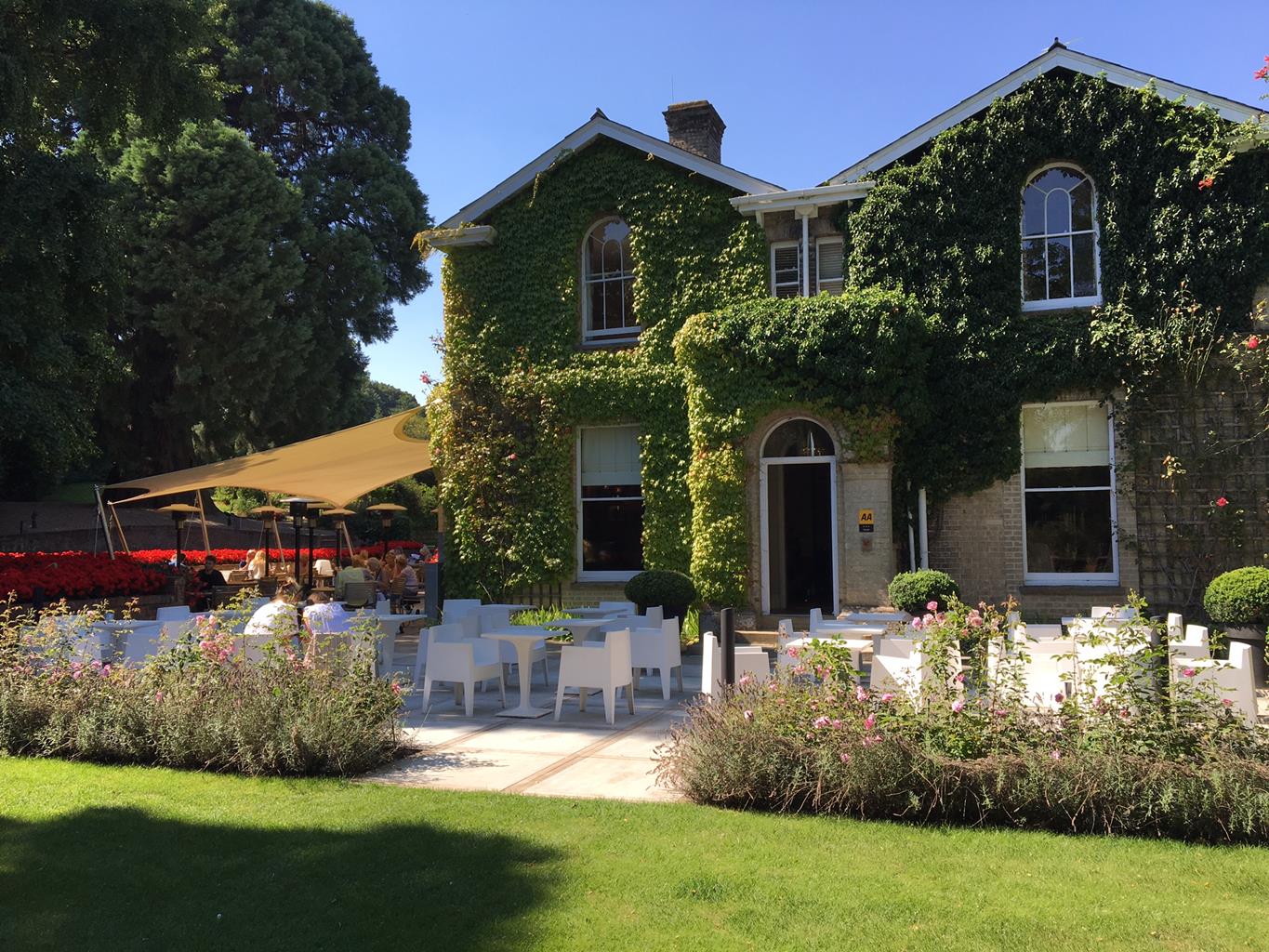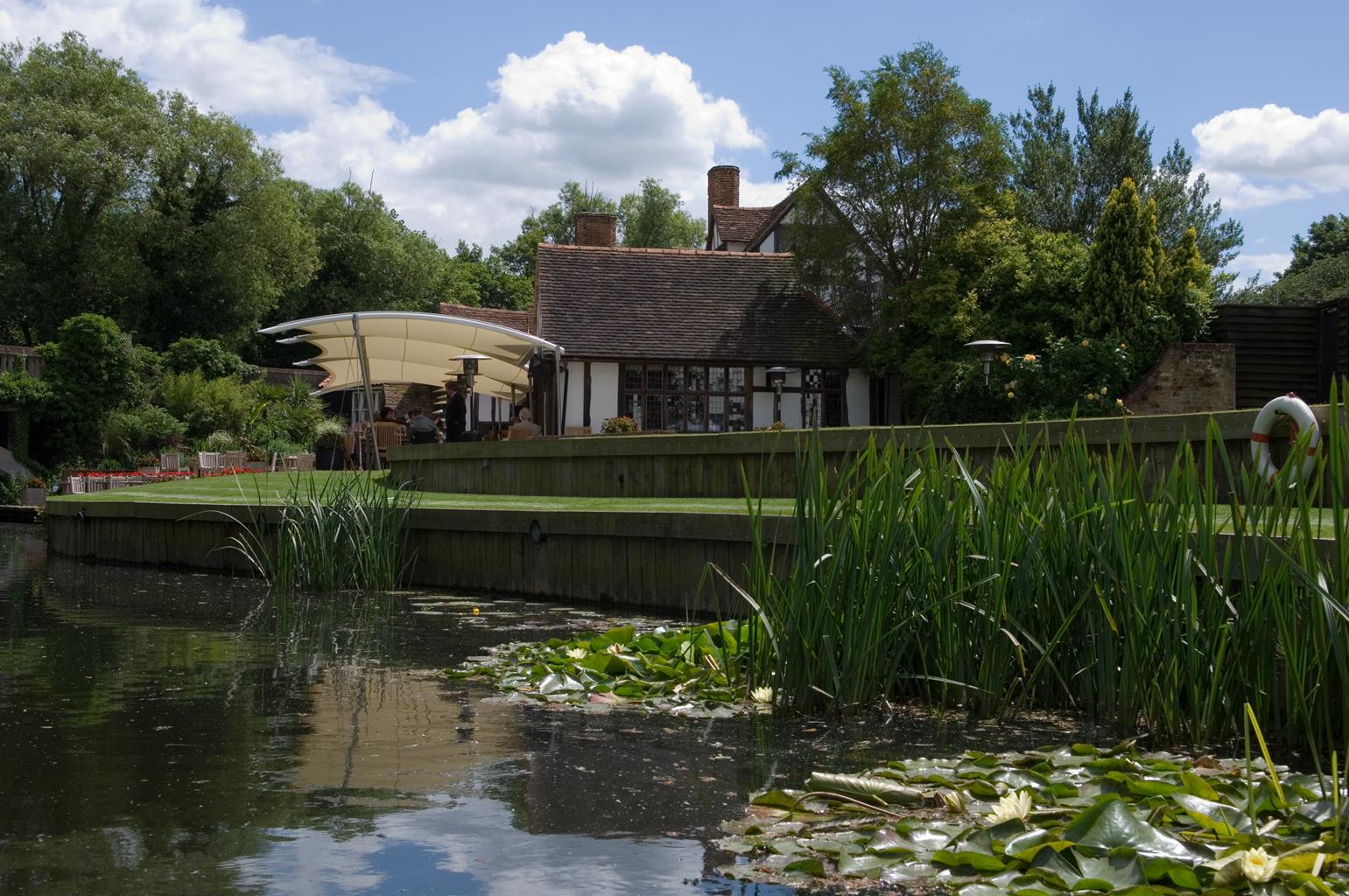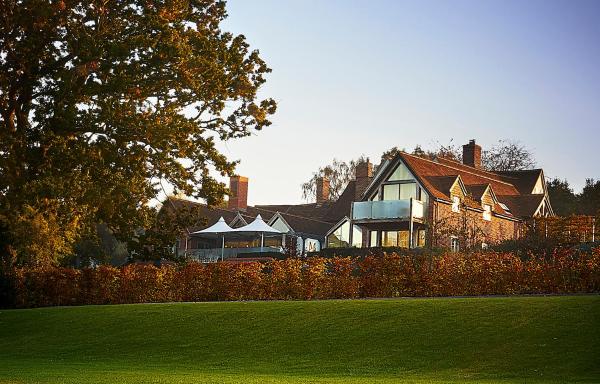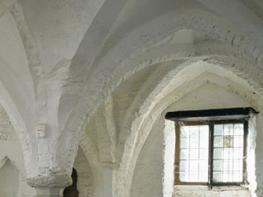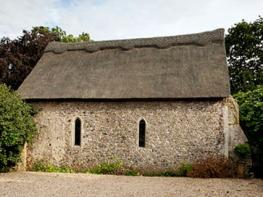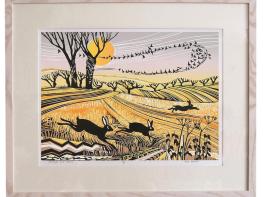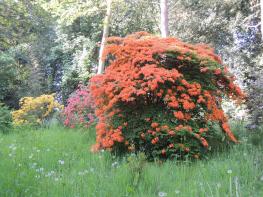The charming Angel Inn has welcomed guests since the 16th century. After a full refurbishment…
Polstead and 'Murder in the Red Barn'

On the trail of a grisly Victorian murder in the deceptively green valley of the River Box.
4 miles (6.4kms)
About the walk
A sensational murder in 1827 brought notoriety to the small Suffolk village of Polstead. With a young squire, a femme fatale and tales of dreams and disguise, the 'Murder in the Red Barn' had all the ingredients of a grisly melodrama and it was soon appearing in 'penny dreadful' scandal sheets and popular plays.
Fatal assignation
The two main characters were William Corder, the son of a tenant farmer, and Maria Marten, the pretty daughter of the village mole catcher, with whom he was having an affair. The 26-year-old Maria had already had two children by different lovers, one of whom, William's elder brother Thomas, had since drowned after falling through ice in the village pond. Maria and William would meet each night in the Red Barn, so called because of the way it glowed red in the setting sun. Eventually she became pregnant, though the baby only survived a few weeks and was buried secretly in a nearby field. Maria's parents demanded that William marry the girl, so he arranged for her to arrive at the barn disguised in man's clothing in order that they could elope to Ipswich out of sight of his disapproving parents and the village priest. Maria went to the barn for her assignation, but she never came out.
Grisly discovery
William Corder moved to London, where he married a woman he had met through a 'lonely hearts' advertisement and set up a boarding school for girls. A year later, Maria's stepmother Anne dreamed that Maria had been murdered and buried in the Red Barn. Her body was discovered beneath the floorboards. She had been shot, stabbed and strangled for good measure. William was arrested and charged with her murder, and despite protesting his innocence, he was found guilty and hanged at Bury St Edmunds in August 1828. The full story of the murder can be found in a booklet on sale at Polstead Community Shop. This walk passes close to several of the sites associated with the crime - though the barn itself is no longer there, it burned down in 1842. William Corder lived at Street Farm, the large farmhouse seen on the left as you descend to the duck pond from the village green. Brook Cottage, where Maria Marten was born, and Maria Marten's Cottage, where she later lived, can both be seen along Marten's Lane. Maria's grave in the churchyard has been plundered by souvenir hunters but St Mary's Church is still worth a visit to see the 12th-century Norman stone spire and the brick arches in the chancel and nave, two features that make it unique among Suffolk churches.
Walk directions
Walk up the lane opposite the duck pond towards St Mary's Church. From the churchyard there are views across the valley to Stoke-by-Nayland and its prominent church tower. Leave St Mary's churchyard through a kissing gate on the left-hand side to enter an area of pasture called The Horsecroft. Cross the meadow and bear right towards a white house. Pass the house, go through a kissing gate and continue along the road for 0.25 mile (400m). After crossing a bridge over the River Box, turn left over a stile, signed 'Scotland Street', on to a footpath that runs through a meadow.
Turn right at a junction of paths to enter the field to your left. The path climbs steadily around the edge of the field before entering the next field and immediately turning left to head downhill and turn right through a small wood to reach a road. Turn right and stay on this lane to walk into Stoke-by-Nayland. If you don't want to visit the village, take the short cut beside a house called Homestead on your left after about 200yds (183m).
Turn left at the crossroads and walk along the B1068, joining a permissive path alongside the road just beyond The Crown. Turn left through a gate when you see a Stour Valley Path waymark. The path descends alongside a tall hedge to meet up with the short cut, then follows the field-edge across undulating farmland and through a kissing gate by a belt of trees then through another kissing gate to head diagonally left across a field. At the far corner of the field, turn sharp left at a kissing gate and walk along the field edge before crossing a stile to reach a road.
Turn right to cross the River Box, then turn left across a footbridge and pass through a kissing gate. Follow this path across meadows, with a marshy area to your left, to reach a kissing-gate and cross a footbridge. Turn immediately left, then keep ahead at a fork and gently climb to fork left through a gateway to enter a belt of woodland. Leaving the woods, turn right along a wide track that leads uphill to Marten's Lane.
Turn left along Marten's Lane. Just before the entrance to Cherry Tree Farm, turn right on to a footpath that skirts the edge of parkland to a stile and goes around a meadow to a stile on the right. This is the Red Barn Path that leads to the murder site. In a few paces, turn left through a kissing gate on the edge of the meadow, passing a small pond on the right. Stay on this enclosed path to pass through another kissing gate and cross a meadow where donkeys graze. Turn right when you get to the end of the meadow, climb to a kissing gate and walk between the houses to reach the village green. Turn left to walk downhill and return to the duck pond.
Additional information
Field-edge paths, meadows, country lanes, 4 stiles
Farmland, woodland, parkland and villages
Farmland - dogs on lead
OS Explorer 196 Sudbury, Hadleigh & Dedham Vale
Lay-by beside duck pond at Polstead
None on route
WALKING IN SAFETY
Read our tips to look after yourself and the environment when following this walk.
Find out more
Also in the area
About the area
Discover Suffolk
Suffolk is Constable country, where the county’s crumbling, time-ravaged coastline spreads itself under wide skies to convey a wonderful sense of remoteness and solitude. Highly evocative and atmospheric, this is where rivers wind lazily to the sea and notorious 18th-century smugglers hid from the excise men. John Constable immortalised these expansive flatlands in his paintings in the 18th century, and his artwork raises the region’s profile to this day.
Walking is one of Suffolk’s most popular recreational activities. It may be flat but the county has much to discover on foot – not least the isolated Heritage Coast, which can be accessed via the Suffolk Coast Path. Southwold, with its distinctive, white-walled lighthouse standing sentinel above the town and its colourful beach huts and attractive pier features on many a promotional brochure. Much of Suffolk’s coastal heathland is protected as a designated Area of Outstanding Natural Beauty and shelters several rare creatures including the adder, the heath butterfly and the nightjar. In addition to walking, there is a good choice of cycling routes but for something less demanding, visit some of Suffolk’s charming old towns, with streets of handsome, period buildings and picturesque, timber-framed houses.
Nearby stays
Restaurants and Pubs
Nearby experiences
Recommended things to do
Why choose Rated Trips?
Your trusted guide to rated places across the UK
The best coverage
Discover more than 15,000 professionally rated places to stay, eat and visit from across the UK and Ireland.
Quality assured
Choose a place to stay safe in the knowledge that it has been expertly assessed by trained assessors.
Plan your next trip
Search by location or the type of place you're visiting to find your next ideal holiday experience.
Travel inspiration
Read our articles, city guides and recommended things to do for inspiration. We're here to help you explore the UK.




